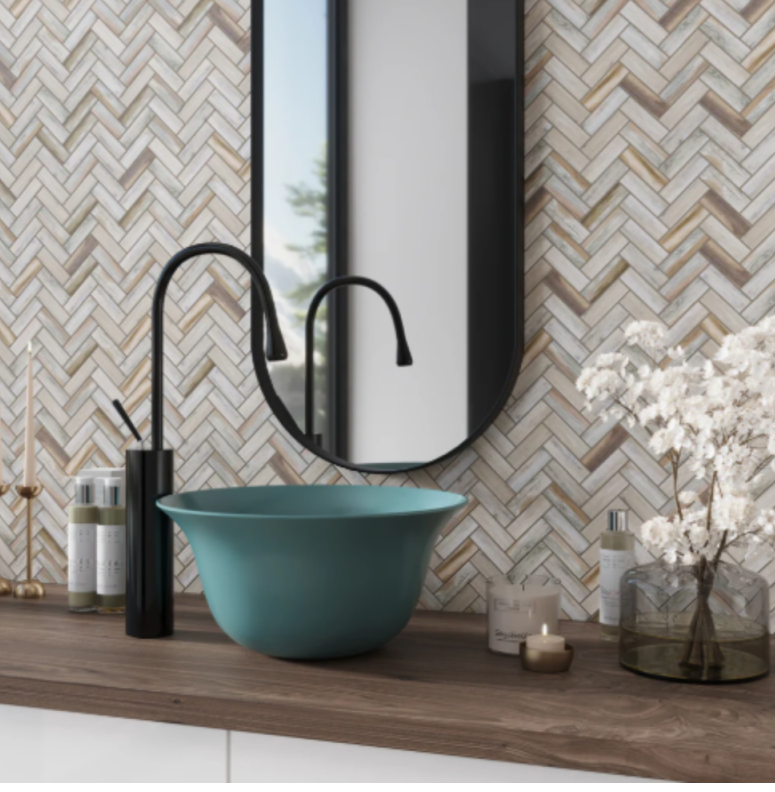
A fireplace is often the heart of a living room, a place where warmth and design come together. Styling it with herringbone pattern tile is an elegant way to add character, texture, and timeless charm. This distinctive zigzag design has been used in architecture for centuries and continues to thrive as a favorite among interior designers. With endless tile materials, colors, and finishes available, the herringbone layout can transform your fireplace into a striking focal point.
The Timeless Appeal of the Herringbone Pattern
The herringbone pattern is known for its classic European origins, often seen in grand old estates, parquet flooring, and stonework. Its appeal lies in its geometric precision combined with dynamic movement. Unlike simple straight tile placement, herringbone creates depth and interest, making it perfect for elevating a fireplace design. Whether you’re aiming for a modern statement or a vintage-inspired look, this pattern adapts beautifully to various styles. When applied with herringbone pattern tile, the result feels both timeless and contemporary, blending tradition with creativity. Its versatility allows homeowners to experiment with color, texture, and finish, ensuring every fireplace becomes a uniquely crafted focal point that reflects individual taste and elevates the entire room’s atmosphere.
Choosing the Right Tile Material for Your Fireplace
Ceramic and Porcelain Tiles
For durability and versatility, ceramic and porcelain tiles are excellent options. Available in countless colors and finishes, they are budget-friendly and easy to maintain. Glossy white or neutral tones enhance a minimalist space, while darker shades create a moody, dramatic effect.
Natural Stone Tiles
Marble, travertine, and limestone bring an elevated, luxurious feel to fireplaces. The natural veining of marble paired with a herringbone pattern makes the surface visually captivating. Stone tiles not only add sophistication but also withstand high heat, ensuring both beauty and longevity.
Glass Tiles
For a sleek and contemporary edge, glass tiles reflect light and bring a subtle shimmer to the room. When arranged in a herringbone pattern, they create a bold yet refined surface that works especially well in modern interiors.
Creative Color Choices to Transform the Mood
Neutral Palettes
Classic shades like white, beige, or gray make the fireplace adaptable to changing décor over time. A white herringbone surround offers a clean backdrop for seasonal styling, while gray tones bring quiet elegance.
Bold and Dark Hues
Deep navy, emerald, or black tiles in a herringbone layout add dramatic flair. These choices are ideal for homeowners who want the fireplace to command attention as a focal point.
Two-Tone Designs
Mixing two complementary tile colors can create a striking contrast. Consider alternating shades or using a darker grout line to highlight the angular details of the herringbone pattern.
Styling Ideas to Enhance the Herringbone Fireplace
Full Surround Coverage
For maximum impact, extend the herringbone tile across the entire fireplace surround. This design frames the fire beautifully, turning it into a sophisticated centerpiece.
Accent Over the Mantel
If you prefer a subtler approach, use herringbone only above the mantel. This method draws the eye upward, making the fireplace appear taller and more prominent.
Hearth Extension
Adding herringbone tiles to the hearth creates a seamless continuation of the design. It ties the floor and fireplace together, offering balance and harmony in the room.
Framing with Contrasting Borders
Surrounding the herringbone tiles with a border in a contrasting material, such as wood trim or metallic edging, enhances the geometry and frames the design like a piece of art.
Grout Selection for Extra Style
Grout plays a surprisingly significant role in defining the overall effect. A matching grout color creates a subtle, unified surface, while a contrasting grout highlights the zigzag lines of the herringbone pattern. For a modern look, try sharp white grout against dark tiles; for a softer feel, opt for warm beige with stone finishes.
Complementary Décor Around the Fireplace
To complete the look, consider how décor elements can enhance the herringbone tile. Rustic wooden mantels add warmth, sleek metallic frames provide modern flair, and layered decorative accents—such as mirrors, artwork, or greenery—bring life to the arrangement. Combining textures around the fireplace ensures the herringbone tiles remain the centerpiece while harmonizing with the rest of the room.
Conclusion
Styling a fireplace with herringbone pattern tile is both a design-forward and timeless choice. From bold modern statements to soft classic arrangements, this pattern adapts to every interior style. By carefully selecting tile materials, colors, and complementary décor, you can transform your fireplace into a stunning focal point that enhances the entire atmosphere of your home. The herringbone design not only adds visual movement but also creates an enduring sense of elegance that will keep your living space stylish for years to come.
